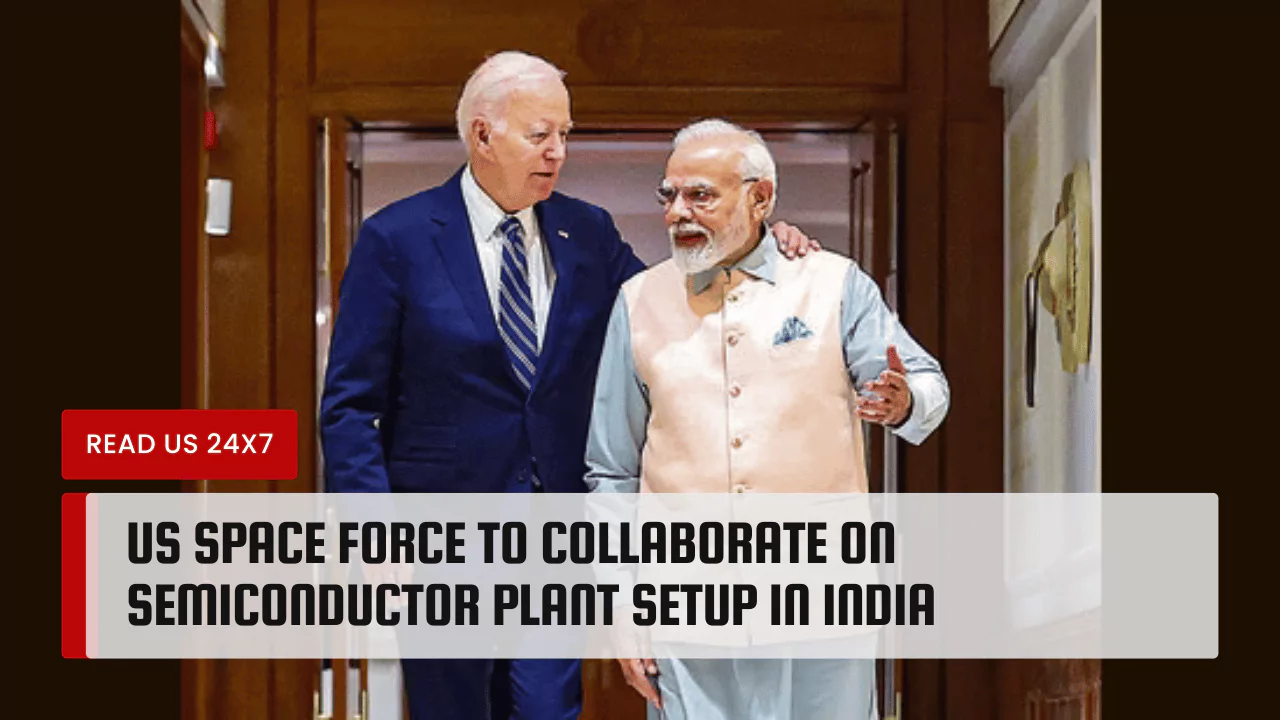The US Space Force is joining hands with India to help set up a new semiconductor plant. This plant will make important computer chips for the US armed forces and India’s defense needs. This collaboration started through a special agreement between the United States and India. It marks a significant step in strengthening the technological ties between the two countries.
What is a Semiconductor Plant?
A semiconductor plant is a factory where computer chips are made. These chips are essential for many modern devices. They power smartphones, computers, and military equipment. By producing these chips in India, both countries hope to ensure a steady supply of these crucial components.
Why Is This Collaboration Important?
This partnership is vital for several reasons:
- National Security: The semiconductor plant will provide chips for military use. These chips help in communication and advanced technology. Having a reliable source in India boosts the security of both nations.
- Supply Chain Strengthening: The global demand for semiconductors has grown. However, many countries face shortages. By developing local sources in India, the collaboration aims to make supply chains more resilient.
- Technological Advancements: With support from the US Space Force and Indian companies like Bharat Semi and 3rdiTech, this project will focus on making advanced chips. These chips will be important for new technologies like green energy and smart communications.
Details of the Agreement
The agreement between India and the US includes several key points:
- Chip Manufacturing Focus: The plant will focus on making chips using materials like gallium nitride and silicon carbide. These materials are suitable for high-performance applications.
- Support from India Semiconductor Mission: The India Semiconductor Mission plays a crucial role in this project. It aims to make India a global center for semiconductor manufacturing.
- Collaborative Research and Development: GlobalFoundries is also involved. Their new facility in Kolkata will work on chip research and development. This will lead to new innovations in various fields.
Benefits for India
India stands to gain significantly from this collaboration:
- Job Creation: The new semiconductor plant will create many jobs. This will provide employment opportunities for skilled workers in India.
- Economic Growth: This project will boost India’s economy. It can lead to more investments in technology and manufacturing.
- Skill Development: Workers will gain expertise in advanced semiconductor technologies. This knowledge will be valuable for future projects.
Benefits for the US
The US will also benefit from this collaboration:
- Secured Supply Lines: By having a semiconductor plant in India, the US can protect its supply lines. This ensures that the military and other sectors have access to essential chips.
- Strengthened Alliances: Working with India reinforces American partnerships in the Indo-Pacific region. It shows a commitment to collaborative defense efforts.
- Innovative Technologies: The partnership can lead to new technological breakthroughs. This helps in keeping American technology at the forefront.
Future Goals
The partnership aims to achieve several future goals:
- Expand Manufacturing Capabilities: The plant is expected to increase semiconductor production in India. This will help meet both domestic and international demands.
- Foster Private Sector Growth: Involvement from private companies can spark innovation. It encourages startups and established firms to explore semiconductor technologies.
- Joint Research Initiatives: India and the US plan to launch joint research projects. These projects can focus on space technologies, artificial intelligence, and more.
The Role of IBM
IBM is a key player in this collaboration. It has signed agreements with the Indian government to enhance R&D in areas like semiconductors. With its resources, IBM plans to support the new initiatives and bring advanced technologies to India.
Conclusion
The collaboration between the US Space Force and India marks a significant milestone in the semiconductor industry. As the countries work together, they aim to create a robust chip manufacturing ecosystem. This partnership not only secures technology and defense needs but also strengthens the economic ties between the nations. The future looks bright as both countries invest in next-generation technologies and innovation for the benefit of their people.



